GenCon 2016 Game review – Mr. Game!
At a glance –
Part board game, part social experiment, all chaos…
Mr. Game! challenges nearly every convention of the classic roll and move board game. This modern spin on retro style gaming has become a family favorite for game night at my house. It checks boxes that I didn’t know existed and jumps through hoops that I had no idea I was holding…Refreshing!
The object is simple. Everyone starts on one space and races to land on the “goal” space to win. That’s pretty conventional stuff, right? Wrong. Mr. Game! creates an atmosphere where even the concept of “what is a space?” can be challenged. The road to victory is complicated by an ever-changing board, as well as an array of cards with different types of wacky functions, a goal that just won’t sit still, and of course, Mr. Game!.
The board –
The board is a pretty straight forward design with the numbers 1-4 in the four corners and some wandering paths of spaces in between. You start on “1” at the beginning of the game and you’re trying to land on “4”. This is subject to change.
The cards –
There are 3 types of cards in the game, “Actions”, “Badges”, and “Powerups”.
“Actions” are the most common cards in the deck and are played immediately when drawn. The effects of these cards vary wildly including (but not limited to) moving other people’s pawns, adding or moving spaces on the board, changing the goal, etc.
“Badges” are cards that are kept secretly in your hand to be played at just the right moment. Some of the effects may be similar to “Action” cards but the ability to weaponize them makes them valuable. The results of a well-timed “Badge” can range from devastating to hilarious…
…or both…
…or neither…
…or…
Never mind. Moving on.
A “Powerup” is a card that is played immediately when drawn and changes the way your pawn behaves, giving you some sort of ability or taking one away. For better or worse, you’re stuck with these until someone takes them or you roll doubles.
There are also four blank cards found in the deck that prompt you to use your imagination…or not. It’s up to you.
Spaces –
Given the ubiquity and familiarity of spaces in tabletop games, I hadn’t really considered the idea of describing them until I got to this point in the review. On one hand, because of the nature of this game, they need to be discussed. But on the other hand, it feels a little like describing to someone how it feels to blink.
The spaces on the board, at a glance, are rudimentary. You have normal spaces that prompt no action. As mentioned before, there are four spaces in the corners of the board that are numbered 1-4 and serve as the “goal” spaces. There are spaces marked with an exclamation point that prompt the player to draw a card. There are also spaces found sporadically about the board that prompt you to “roll again”. If that’s not enough, all of these spaces can be different colors depending on where they are found on the board. The colors of the spaces have no bearing on their function when playing with the rules as written. That said, the colors, location, and even the null area between spaces can (and probably will) routinely come into play because of this game’s chaotic nature.
Tiles –
Tiles are essentially spaces that can be added or moved on the board once prompted by a card, changing the effect of a space or adding a new one altogether! There are several types of tiles. Nearly all of the spaces described above can be found in the stack of tiles, as well as webs in which your pawn can get “stuck”, portals that allow you to quickly traverse the board, and null spaces to cut off possible avenues for your opponents.
Mr. Game! –
Last but certainly not least, there’s Mr. Game!. Before you begin playing, you decide who will act as Mr. Game!. While all players are expected to interpret the rules, this player will have the final word on any decisions to be made concerning them.
From this mechanic, chaos is born.
While the other players are constantly trying to take advantage of any given situation that may get them closer to winning, they invariably will be challenging the very conventions of a roll and move game. This, coupled with a purposefully minimalistic set of written rules, creates an environment where house rules are necessary. This is where Mr. Game! comes in. During play, Mr. Game! will have to make any number of probably ridiculous and unforeseen rules decisions. As these situations are arbitrated, they become rules for the remainder of the game. Keep in mind that whoever is playing as Mr. Game is also playing the game with everyone else and, as such, must uphold and is subject to his or her own rulings throughout the game.
What’s in the box? –
( 1 ) How To Play Booklet
( 1 ) Alternate Game Types Booklet
( 104 ) Cards
( 18 ) Tiles
( 8 ) Player Pieces
( 8 ) Player Cards
( 2 ) Four Sided Dice
( 2 ) Goal Markers
( 4 ) Blank Cards
Components –
The components of the game are all of very good quality and have weathered several plays with little to no wear and tear.
Learning Curve –
If you read every word of the rules pamphlet it’ll take you about 10 minutes to learn to play. The set-up is minimal and the core mechanics of the game are extremely intuitive.
Packaging –
The storage space in the box holds all of the components well and passes the “shake test” with minimal movement.
Rules –
Ordinarily, a rules document that leaves so many unanswered questions would receive bad marks in this category. However, this one, because of the nature of the game, is perfect.
Play time –
The play time varies from game to game. Most of them last 20 to 60 minutes with 4-6 players,
The “Sweet Spot” –
Rated for 2 – 8 players, the more the merrier! We’ve played with as many as 7 players with no negative experience regarding gameplay. That said, after having experienced the game several times with varying group sizes, I’m going to put the sweet spot somewhere between 4 – 6 players.
Replay ability –
Having many variants and additional rules included in the “Alternate Gametypes” book that comes with the game, several more variants published at http://whoismrgame.com/your-house-rules/, along with the fact that you can play a completely different game just by changing the people playing or who presides as Mr. Game!, the replay ability of this one is off the charts!
Price – $35
You can purchase your copy here.
Final Thoughts –
The charm of Mr. Game! is rooted in the unpredictability that spawns from just playing the game. This provides the players with an experience that is unique not only to their gaming group, but to the individual session, which prompts the telling of stories and anecdotes about those sessions. This is a trait usually found in meatier board games and tabletop RPGs such as Dungeons and Dragons rather than a simple roll and move game. But then again…
Just a simple roll and move board game, Mr. Game! is not…
I believe that Mr. Game! is, in and of itself, an experience.
Rating – 10 out of 10
But then again, this is just my humble opinion.
-Dan Whorl
Check out our interview with the creator of Mr. Game!, Frank DiCola, here.
A review copy of Mr. Game! was given to me at GenCon 2016 by the game designer. No money or further compensation changed hands or has been promised for a good review. They earned it!
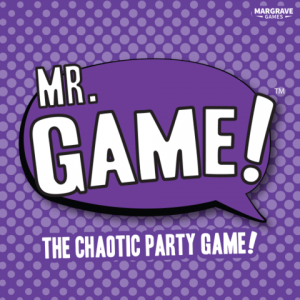
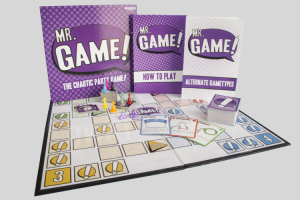

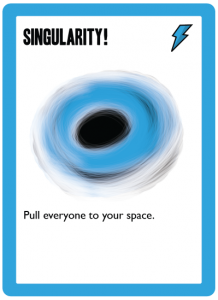
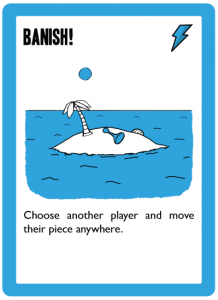
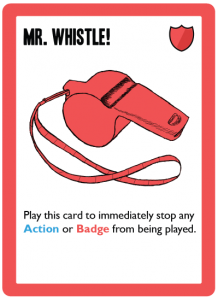
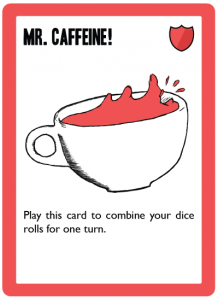
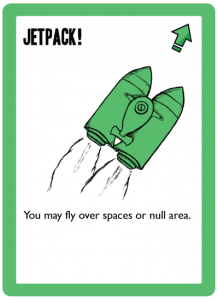
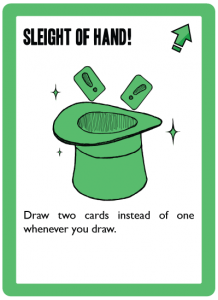

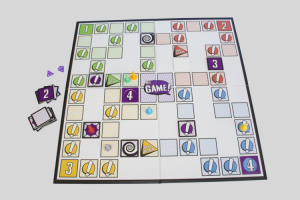

Sorry, the comment form is closed at this time.